Breadcrumb
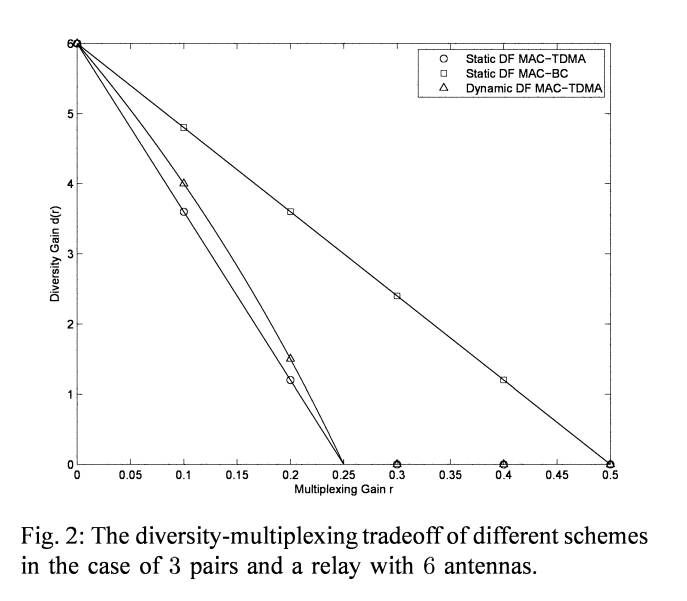
The MIMO wireless switch: Relaying can increase the multiplexing gain
This paper considers an interference network composed of K half-duplex single-antenna pairs of users who wish to establish bi-directional communication with the aid of a multiinput-multi-output (MIMO) half-duplex relay node. This channel is referred to as the "MIMO Wireless Switch" since, for the sake of simplicity, our model assumes no direct link between the two end nodes of each pair implying that all communication must go through the relay node (i.e., the MIMO switch). Assuming a delay-limited scenario, the fundamental limits in the high signal-to-noise ratio (SNR) regime is analyzed using
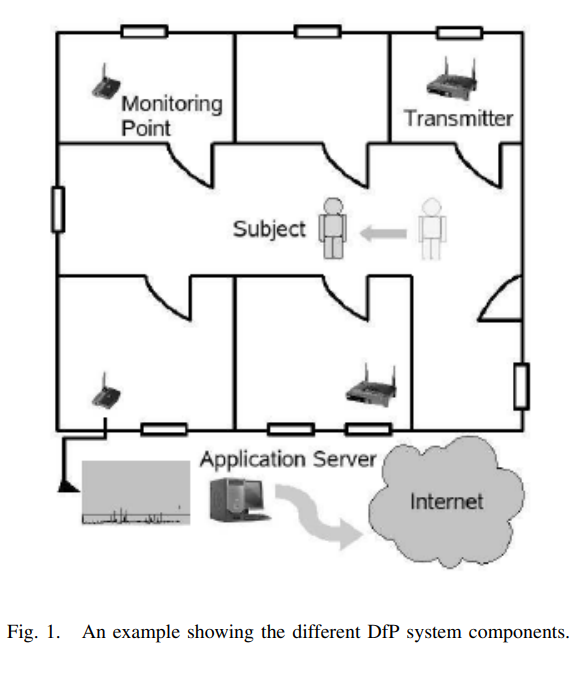
Smart devices for smart environments: Device-free passive detection in real environments
Device-free Passive (DfP) localization is a system envisioned to detect, track, and identify entities that do not carry any device, nor participate actively in the localization process. A DfP system allows using nominal WiFi equipment for intrusion detection, without using any extra hardware, adding smartness to any WiFi-enabled device. In this paper, we focus on the detection function of the DfP system in a real environment. We show that the performance of our previously developed algorithms for detection in a controlled environments, which achieved 100% recall and precision, degrades
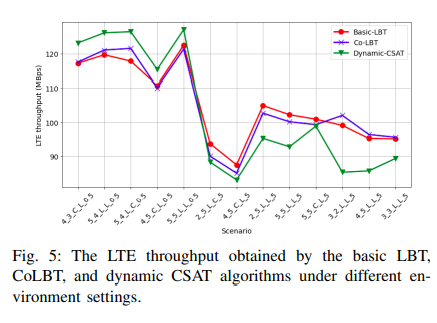
Machine Learning-based Module for Monitoring LTE/WiFi Coexistence Networks Dynamics
Long-Term Evolution (LTE) technology is expected to shift some of its transmissions into the unlicensed band to overcome the spectrum scarcity problem. Nevertheless, in order to effectively use the unlicensed spectrum, several challenges have to be addressed. The most important of which is how to coexist with the incumbent unlicensed WiFi networks. Incorporating the "intelligence"component into the network radios is foreseen to resolve the intrinsic network challenges, rather than conventional non-adaptive action plans. Specifically, an intelligent cognitive engine (CE) that continuously
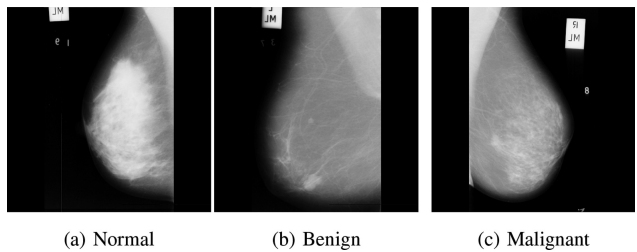
Early breast cancer diagnostics based on hierarchical machine learning classification for mammography images
Breast cancer constitutes a significant threat to women’s health and is considered the second leading cause of their death. Breast cancer is a result of abnormal behavior in the functionality of the normal breast cells. Therefore, breast cells tend to grow uncontrollably, forming a tumor that can be felt like a breast lump. Early diagnosis of breast cancer is proved to reduce the risks of death by providing a better chance of identifying a suitable treatment. Machine learning and artificial intelligence play a key role in healthcare systems by assisting physicians in diagnosing early, better
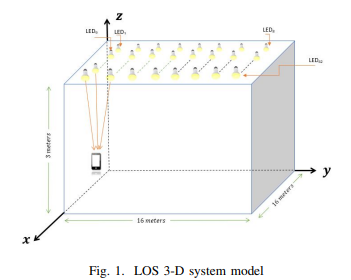
Visible Light Communications Localization Error Enhancement using Parameter Relaxation
In this paper, we propose applying a parameter relaxation technique to the location estimation algorithm that is based on the Received Signal Strength (RSS) of Visible Light Communications (VLC). A hybrid system of localization balancing is introduced, where the localization algorithm is developed with and without this efficient parameter relaxation. The results show that applying the parameter relaxation reduces the localization Root Mean Square (RMS) error by 43% of that without relaxation; and the processing time is reduced by 18% of that without relaxation. Moreover, the parameter
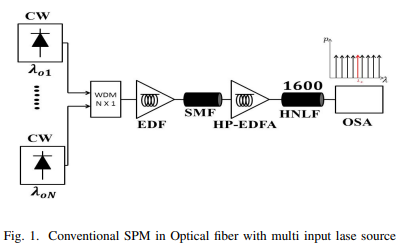
Generation of OFC by Self-Phase Modulation and Multiple Laser Sources in HNLF
Self-Phase Modulation (SPM) is a non-linear phenomenon relating to the self-induced phase shift encountered by the optical field during its transmission into the optical fiber. It is the most popular technique for generating an optical frequency comb (OFC) with different frequency spacing values. The SPM is regulated by many parameters such as fiber length, input optical power, and the non-linearity of the optical fiber. The OFC distinguishes between a high spectral flatness level, a high optical signal-to-noise ratio (OSNR) and a wide range of wavelengths. In this paper, The SPM uses to
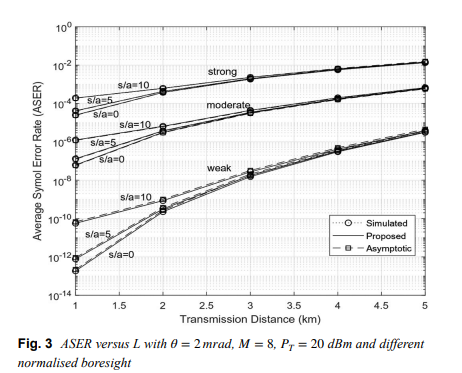
Generic evaluation of FSO system over Málaga turbulence channel with MPPM and non-zero-boresight pointing errors
Free space optical (FSO) communication channels are affected by fluctuations in irradiance due to atmospheric turbulence and pointing errors. Recently, a generalized statistical model knows as Málaga (M) was developed to describe irradiance fluctuations of the beam propagating through a turbulent medium. In this paper, an approximate finite-series probability density function (PDF) for composite M turbulence with pointing errors is verified. Considering multiple pulseposition- modulation (MPPM) with intensity modulation and direct detection, specific closed-form expressions for average symbol

6G: A comprehensive survey on technologies, applications, challenges, and research problems
The inherent limitations of the network keep on going to be revealed with the continuous deployment of cellular networks. The next generation 6G is motivated by these drawbacks to properly integrate important rate-hungry applications such as extended reality, wireless brain-computer interactions, autonomous vehicles, and so on. Also, to support significant applications, 6G will handle large amounts of data transmission in smart cities with much lower latency. It combines many state-of-the-art trends and technology to provide higher data rates for ultra-reliable and low latency communications
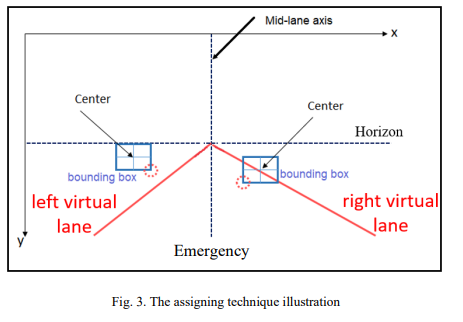
Demonstration of Forward Collision Warning System Based on Real-Time Computer Vision
This paper demonstrates the software and hardware of a forward-collision warning system using techniques of realtime computer vision which helps self-driving cars and autonomous vehicles systems to merge with the road environment safely and ensure the reliability of these systems. The software approach of the paper consists of five parts: car detection, depth estimation, lane assignation, the relative speed of other cars and their corresponding speed limit and finally ultrasonic sensors which completes the front of the vehicle as the camera can't cover it alone. Besides these five objectives
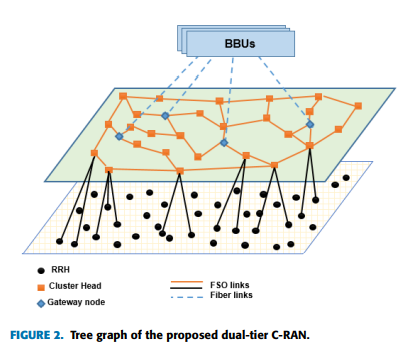
Dynamic Traffic Model with Optimal Gateways Placement in IP Cloud Heterogeneous CRAN
In this paper, topology design, optimal routing, and gateways placement selection algorithms are proposed in Heterogeneous Cloud Radio Access Network (C-RAN) with exploiting Free Space Optical (FSO) communication. The proposed network consists of two tiers; the lower tier concerns with clustering Remote Radio Heads (RRHs) based on traffic demands. The upper tier consists of transceivers along with the Cluster Heads (CHs) and gateways. Algorithms are proposed to achieve the lowest number of edges and the highest possible throughput based on the presented optimization problem. Moreover, route
Pagination
- Previous page ‹‹
- Page 23
- Next page ››
